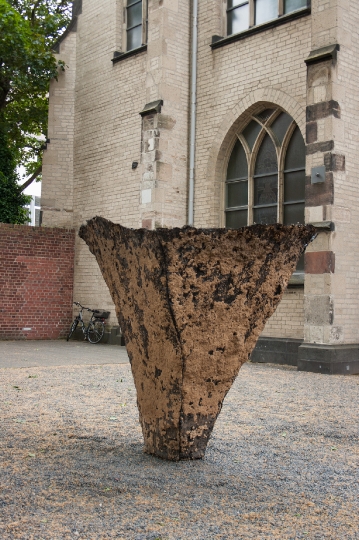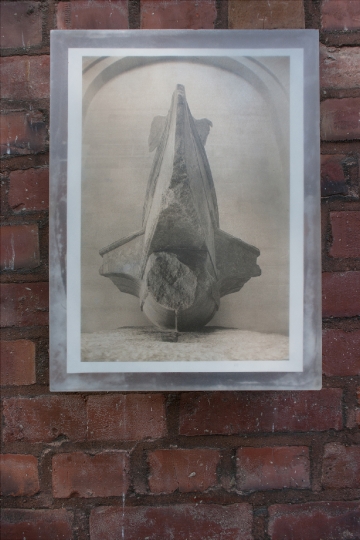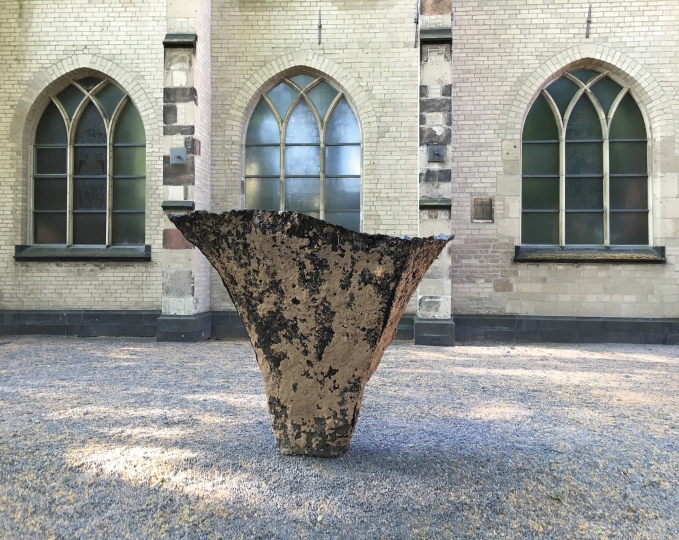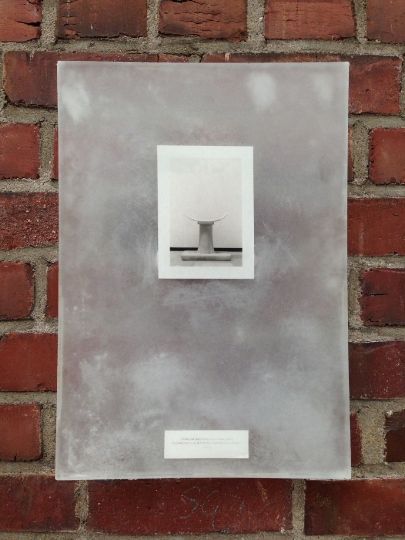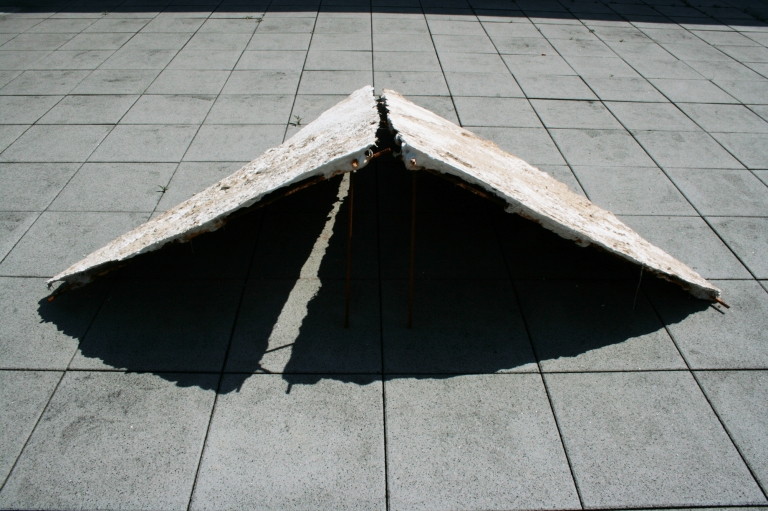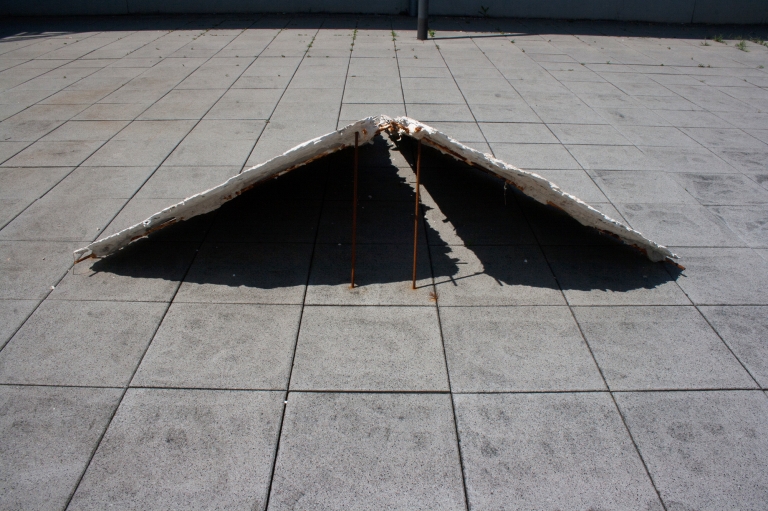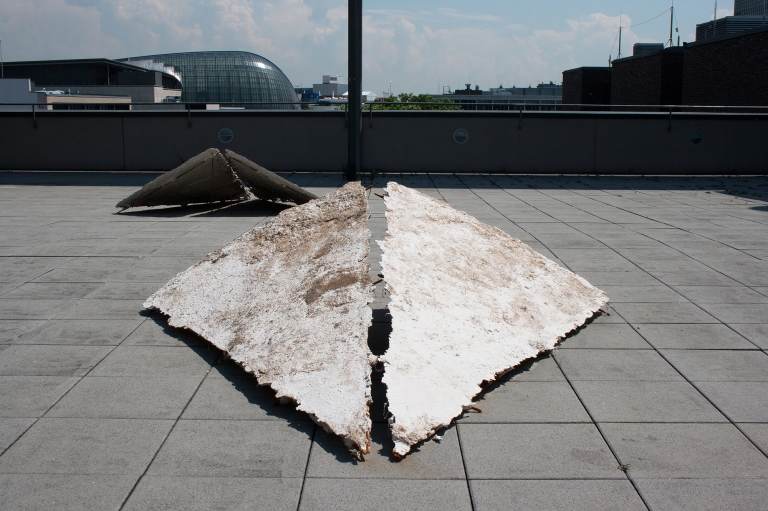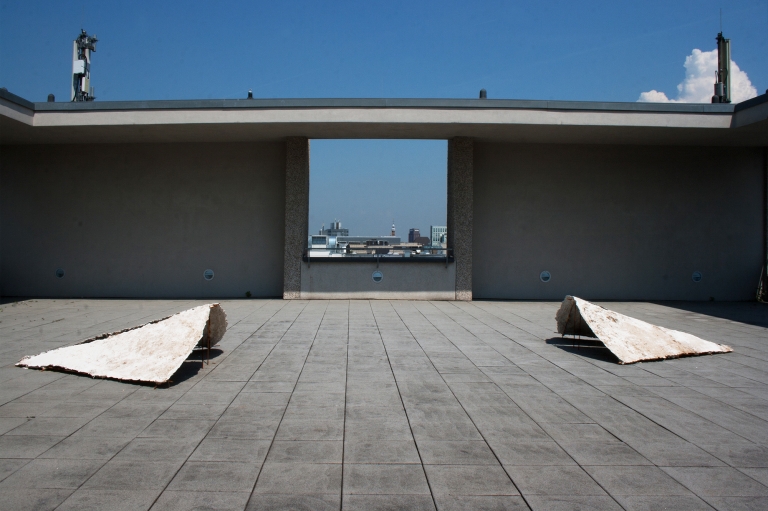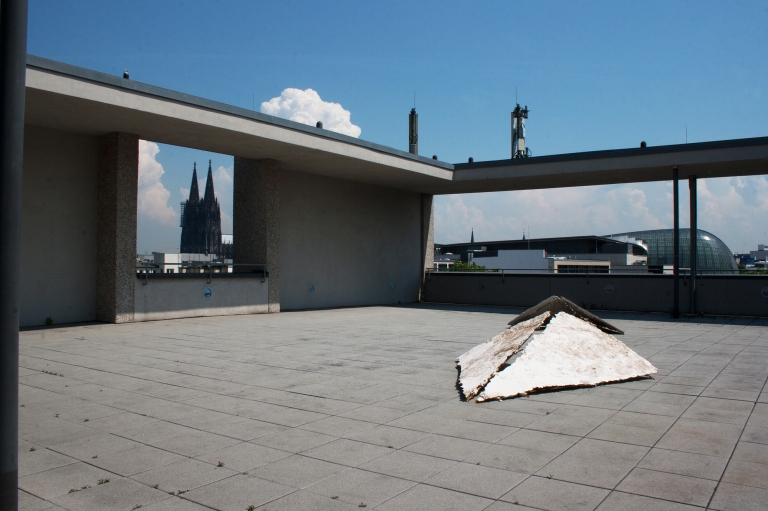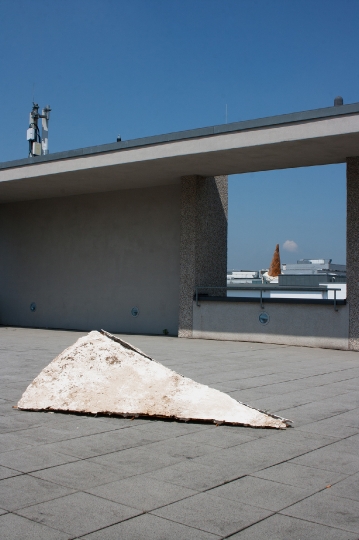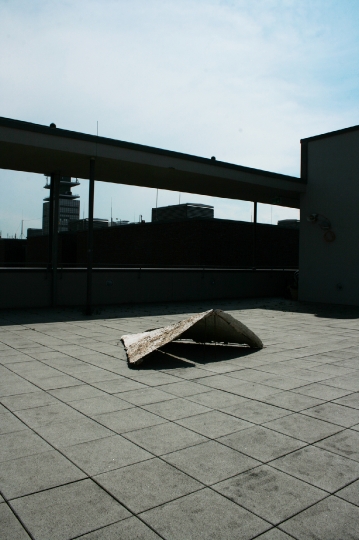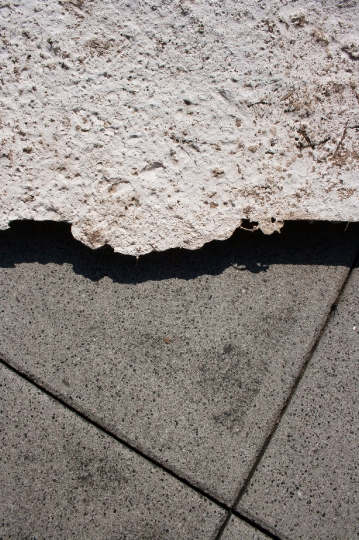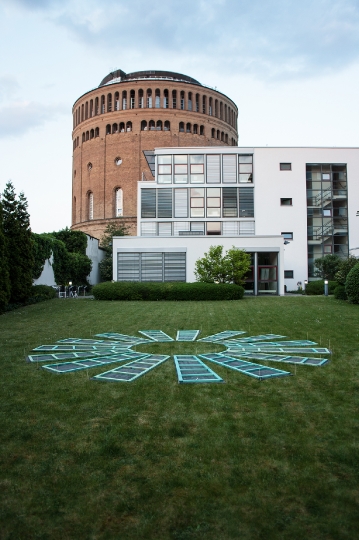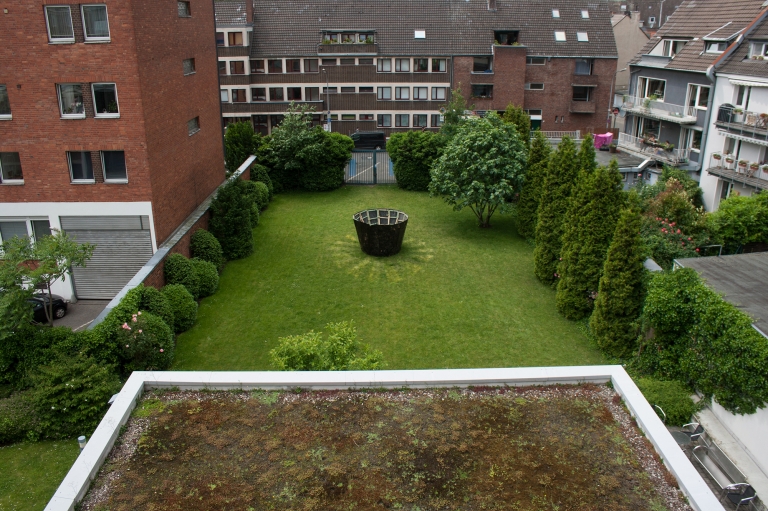A man-sized, black cylindical object on a lawn, a similarly sized polygonal lump of earth which seems to have been ripped out of the erath looms in a courtyard: we come up against Claudia Mann´s sculptures in erratic forms. The sculptor´s procedures appear as archaic as the sculptures she creates. For she is interested in the actual sculptural practice, in its origins, which, it seems, are to be found in simple gestures. In the last few years she has grappled more with castings and moulds and here she dedicates herself to the ground, soil or erath as the fundamnetal condition of sculpture. Tombe.Tambour. stands as a black cylindrical body on a law. It has been put together with narrow segments like barrel, which through the application of synthetic resin and glass fibre fabrics on the surface of the lawn then raised up and connected together is created in situ. This procedure allows for the negative imprint of the structure of the grass to become the outher skin of the sculture. Simultaneously, and this is an outstanding feature of many of Claudia Mann´s works, the casting takes on a violation of the original form: blades of grass are glued togehter with the resin; as they remain stuck there they become encased, fossil-like, within. The maimed turf becomes an ephemeral archive of the production process.
Aero, First Sculpture is Grave the artist researches the grave as basal sculptural gesture. Here the hole is calculated to a depth of a 2,07m, the stretched out body of the artist, and has the form of a two-part, pierced-through irregular tetrahedron. Due to the fact, with the exception of the upper side, soil adheres to the entire surface of the sculpture and the various strata of the terrain are displayed. It is less a casting, than a crosssection through the earth; a wafer thin layer, which nonetheless articulates itself as fully plastic volumes held together by invisible mass of plaster or bitumen.
Georges Didi-Hubermann has analysed casting and moulding as the coinciding of two temporalities: the moulded object is at once past and present, absent and present. Claudia Mann puts this analysis to the test. By integrating the material traces of the casted object, she emphasises the contingency of momentous event that cannot be merely discussed as a casting. The temporal tension and the indecisions between presentation and representation contained in each casting, present themselves here in a radical way. The sculptures stand, simoultanously, in a variety of historical references for instance, to ancient Egyptian funerary culture and yet are never limited to that but actually provoke thought experiments: could Aero with its aerodynamic geometry float just as well in other space?
Dr. des. Falk Wolf

